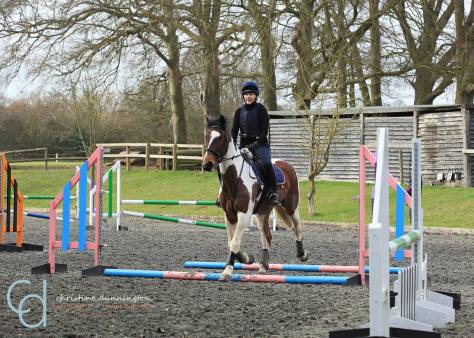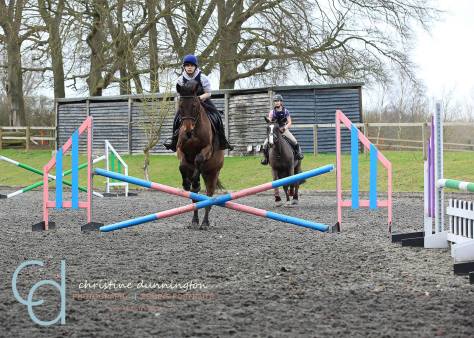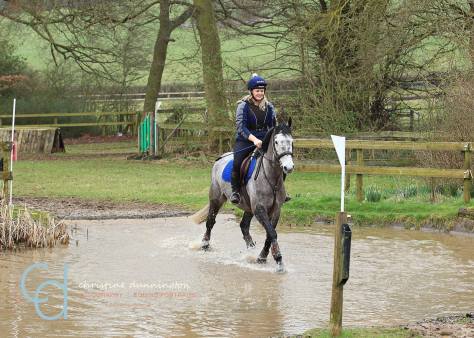By Mairi Mackay www.mairimackay.com

Feeding your horse can seem like a complex business and can be hard to know where to start with all the different brands on the market.
At Aspire we’ve been using Smart Horse Nutrition to feed our horses with really good results, and the last time expert Robert Fowler from producer Castle Horse Feeds came to drop off some bags he agreed to sit down with us for a chat.
We talked about everything from how horses have evolved to whether or not to use supplements and why it’s important to learn to read a feed label.

Aspire: Let’s start with the basics: What are the key things horse owners should bear in mind when feeding their horses?
Robert Fowler: The most important part of any horse’s diet is the forage it gets because that’s by far the biggest part of it. Everyone gets really excited and focuses in on two kilos a day of the food that they are feeding in the bucket and too many people ignore the other 80% or 90% of the horse’s diet. All you are doing in the bucket is topping up what your forage or your grazing [isn’t providing that] your horse needs — whether it’s growing, whether it’s working or whether it’s just maintenance.
So, most of the focus of the feeding should be on forage, not on that last little bit of food that’s going into the bucket. That’s the most important thing. So many horses could just do really well on really good forage and a balancer for vitamins and minerals. All these other fancy feeds are for horses who need more energy for work or more energy for condition.
Aspire: When you talk about forage, you mean hay, haylage and what they are eating in the field?
RF: Yes, you’ve got to take that whole part as the forage part of their diet and for a lot of horses that satisfies their maintenance. You should be really obsessive about forage. Nutritionist[s]…look at everything the horse is eating, not just the little bit that [they’re] designing for it. If you want to have any idea of what to give your horse, you have to know what he’s already getting.
Aspire: How can you know if your horse is getting the right nutritional value?
You’ve got to understand whether [the temperature is] minus 20 or plus 20, you’ve got to understand whether the horse is working, you’ve got to understand all those different things that come into it. Because basically your horse and it’s condition is a very simple proposition: You’ve got energy going in, you’ve got energy coming out. Now, if the horse is getting more energy than it requires, it puts weight on, if it’s getting less energy than it requires, it loses weight. It’s as simple as that in a healthy horse.

If you want a horse to put weight on you want to feed it more energy than it’s expending. Now, is it expending that energy because it’s cold — it’s clipped and it hasn’t got enough rugs on? Is it expending that energy because you’re riding it for two hours a day and it’s using more energy than is going in? Again, on fat horses, if you’ve got a fat horse, it’s getting too much energy and you’re not getting enough energy out. It really is that simple.
Aspire: Where do things like a horse being a “good” or “bad” doer come into it?
RW: That comes down to their genetics. Certain genetic makeup of a horse makes it more able to get more nutrition out of a given feed than another horse. That’s really where that [phrase comes from]. If you think of native ponies and some of…my wife has Lusitano horses, they are really, really good at extracting maximum nutrients and energy out of given feedstuffs [and much better] than other horses are. So, it is really the genetic makeup of the horse that predisposes it to being a good doer or a bad doer.
Aspire: One of the perennial debates in the horse world is how often you should feed your horse each day. What’s your advice on this?

RW: You’ve got to think about what your horse is and how it has evolved. Your horse has evolved to be a trickle feeder. It’s a hindgut digester, so its whole physiology is suited to having feed in its system all the time. It’s not a meal-eater at all — it should be having forage all the time.
If you look at a horse, every part of its digestive system denotes that it is meant to be chewing all the time: its teeth grow constantly throughout its life, so therefore it’s expecting to be chewing all the time and grinding those surfaces down … our teeth don’t grow, so we’re meal-eaters. A horse is expecting to be eating for 17, 18, 19 hours a day so it is expecting to have quite a high wear and tear on its teeth.
It has a very small stomach because it is expecting food to be coming in and out of there. It’s not expecting half a bucket-full of oats to arrive in its stomach at any one time. It also has a very short small intestine — which is where it digests starch and sugars — so it’s saying [that] it’s not expecting to come across much starch and sugar … [which are] are digested through being broken down by enzymes in the small intestine.
It’s expecting the bulk of its food to be digested in the hindgut. It relies on microbes to digest fibre, so the fibre and everything that it has evolved to eat lands in the hindgut for the microbes to break down. They break fibre down into volatile fatty acids which go into the horse and are stored and the rest is…history.
Aspire: So, how does all that translate into how to think about feeding your horse?
RW: The ideal for a horse would be to have a fully formatted diet where he eats over 18 hours a day. The next [best] way to feed horses would be to break up what they need through probably 20 hours of the day…Then you are all the way down to… well, if you are just having a balancer then having half a kilo of balancer is not too bad to be fed over one or two times [a day] but you really don’t want to go over feed sizes of a kilo to a kilo and a half because the horse’s stomach is only the size of a rugby ball. Smaller is better.
Aspire: Should horse owners add supplements to their horses’ feeds?
RW: I personally wouldn’t use any vitamin or mineral supplements. You would expect to get that from a quality feed. [If] you are feeding a balancer — and when that’s fed at half a kilo a day — that should supply all the vitamins and minerals and probably digestive aids that your horse needs along with a good, well thought through plan for your horse … based on forage, which it should be…
The only other thing I would look at is an electrolyte for hard-working horses and … a joint supplement [as a] belt-and-braces thing. I don’t have a huge amount of confidence in most of the joint supplements out there because if you look at how they work and how they are absorbed in the horse, I’m not sure that there is good enough evidence to prove that they get there.

Aspire: If a horse owner wants advice about feeding to protect a horse’s joints or the condition of their hooves, who would you suggest they talk to?
RW: I would suggest they talk to a nutritionist from one of the feed companies. [If you are] feeding [your horse] a quality feed you shouldn’t have any hoof issues. So, are there other things going on with your horse that are not right? The basics are: If you are looking at feet, you want your horse to be eating about 15mg of biotin a day. Is your balancer or feed providing that, along with some quality zinc.
Again, minerals are quite important — [as is] the form that they are in. With the Castle/Smart brands, we’re moving towards only using chelated minerals. That means they are more bio-available. You want to avoid oxides and sulphates of minerals because that means they are man-made basically and they are a cheaper form.
Aspire: Any last thoughts on feeding for owners?
RW: [What] I would say to horse owners is just remember that you’ve got a half ton of … animal with lots of complex things going on in their body. Remember how they’ve evolved and what they are. Feeding is really simple. Don’t get caught up with all these latest branded things. Try and learn how to read a feed label to see what that feed is delivering. If it’s got high energy and high starch then all that energy is coming from cereals. If it’s got high energy, high oil, low starch then it’s a much safer feed to feed to your horse. It’s more what your horse has evolved to eat.

This interview has been carefully edited for clarity and readability.
Huge thank you to Christine Dunnington for capturing moments throughout! www.cdphotos.co.uk

















































